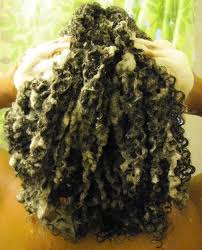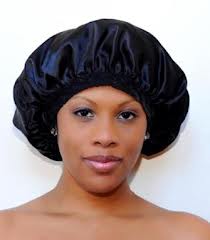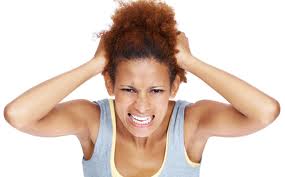Water is the supreme moisturiser. When you wet your hair the water moelcules actually penetrate the hair shaft and make the hair softer and more elastic.
Moisture = hydration, hydration = water, hydrated hair = less breakage.
2. Use a shampoo and conditioner within the same product line or test the pH of your chosen shampoo and conditioner to ensure they complement each other.
Conditioner is meant to be more acidic than shampoo. The lower pH of the final product used in the cleaning process (typically the conditioner) helps to seal off the hair; sealing the hair means hair cuticles are smoothed down and moisture is held in better. A shampoo and conditioner within the same product line will be developed with this requirement in mind.
For example, the shampoo of one brand may have a pH of 4.5 and the conditioner 3.5 meaning that your hair is properly sealed off. But if you then go and use a conditioner of another brand whose pH is 5.0, this sealing off process won’t happen properly.
Deep conditioners contain moisture-boosting elements and proteins that a) strengthen the hair cuticle and b) enhance the hair strand’s moisture.
I didn’t know this until recently but not all conditioners are made equal. There are five main types:
- Instant conditioners
- Cream-rinse conditioners
- Deep conditioners – you want this one
- Moisturising conditioners
- Protein conditioner
The weaker types (e.g. instant conditioners) are designed for daily use, some are designed for weekly use, e.g. deep conditioners and some shouldn’t be used more than once a month (e.g. those very high in protein).
Washing your hair with warm water helps to dislodge dirt and oil. It also increases the hair’s porosity i.e. the cuticles open up so that all the good stuff from your shampoo and conditioner is easily absorbed.
Rinsing your hair in cold water at the end of the washing process will help to flatten the cuticle and lock in moisture. I also do this when I wash my face. It helped to clear up my acne.
5. Apply a moisturiser to your hair before you apply any oil.
Oil is not a moisturiser. Oil and water do not mix hence oil, if at all used, needs to be applied last so that it stops moisture from escaping. Oil is fantastic at locking in moisture.
Moisturisers can be water-based or oil-based. In oil-based moisturisers water and oil are blended using “emuslifiers”; emulsifiers stop the water and oil from separating. A shea butter based moisturiser is the best option in my opinion.
A buttery one works best on wet hair and a creamy one is fantastic for dry hair.
7. Avoid petrolatum, petroleum and mineral oils.
Although they are great for sealing in moisture, they provide no additional benefit.
That said, if you have a moisturiser where one of these appears low down the list of ingredients, it means they don’t form a major part of the mosituriser. According to The Science of Black Hair, “as a rule of thumb, these sealants should never be listed in the top five ingredients of any moisturiser you use”.
Great oils for sealing moisture within the hair cuticle (most to least preferred):
- Coconut oil
- Jojoba oil
- Avocado oil
- Argan oil
- Castor oil
- Sweet almond oil
All these oils are available in one money-saving pack.
9. Drink lots of water.
A lot of hydration operates from the inside out.
Keeping a dry scalp moisturised will ensure that the scalp’s environment is conducive for hair growth and is efficiently supplying hair with oil (sebum) to help in the hydration of hair.
The best oil you can apply to your scalp? Jojoba.
Jojoba is very similar in structure to sebum (the oil produced by the scalp) and as such is my oil of choice.
11. Spritz your hair with water twice a day.
This will help to keep it hydrated. Note that if your hair is damaged or if you have a build up of minerals on your hair (e.g. from hard water) or if you’re using a product high in petrolatum/petroleum/mineral oil, water will find it hard to penetrate to the cuticle.
Cotton absorbs the moisture from your hair a lot more than satin does. In addition, satin fibres are smoother than cotton ones so you’re less vulnerable to breakage with satin.
13. Wear protective hairstyles when the weather is harsh.
If it’s very hot or windy your hair will dry out VERY quickly.
















